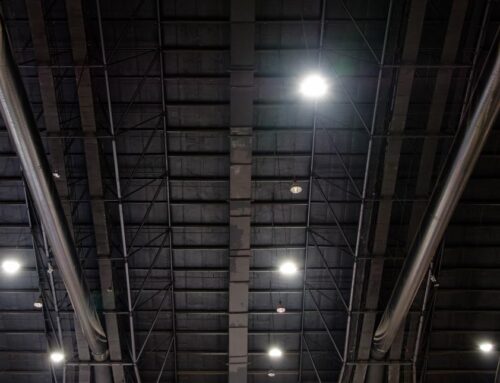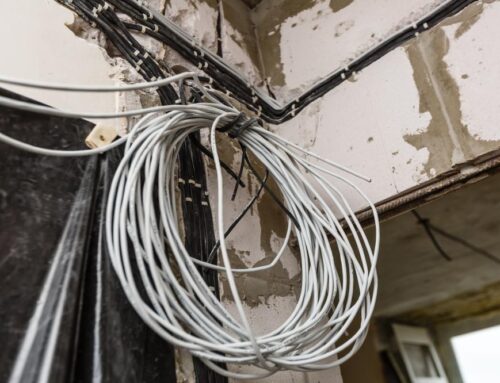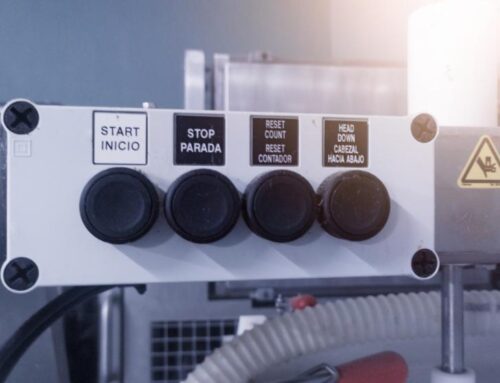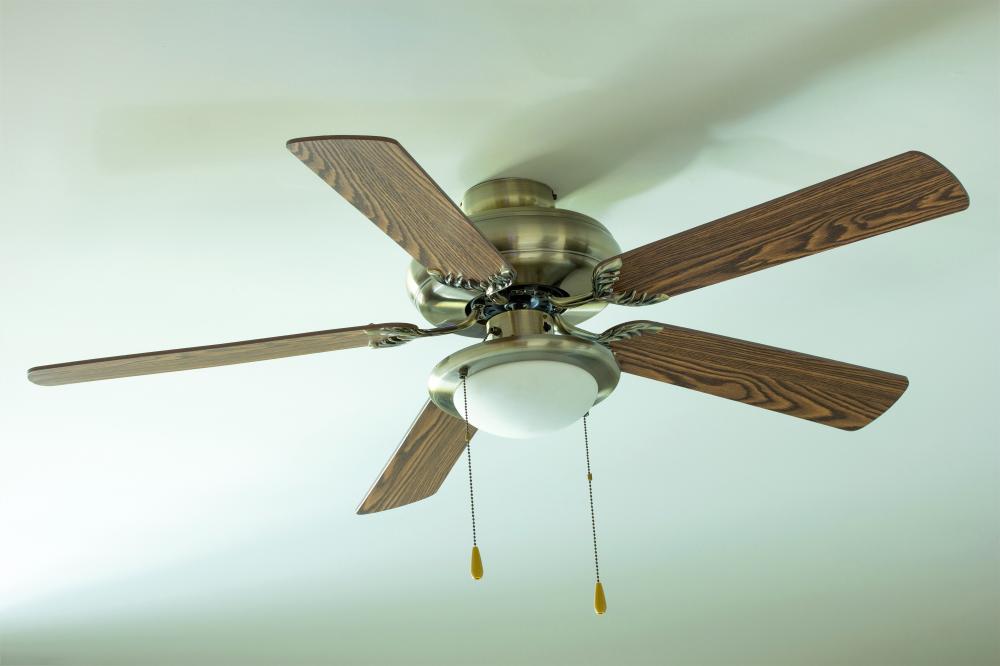
Importance of Ceiling Fan Selection
Selecting the right ceiling fan is crucial for both functional and aesthetic reasons. A well-chosen fan provides optimal airflow and complements your room's décor. As an expert with Beverly Hills Electrician Pros, I always emphasize matching the fan style to your interior theme.
Consider the room size when choosing a fan. Larger rooms may need a fan with a greater blade span to ensure efficient air circulation. For smaller areas, a fan with a smaller blade span is more appropriate. This balance helps maximize energy efficiency while ensuring comfort.
Pay attention to the blade's pitch and the motor quality too. A steeper blade pitch and a robust motor often result in better performance, offering quieter operation and longer-lasting durability. It's these details that often get overlooked yet make a significant difference.
Tools and Materials Required
Having the right tools and materials is essential for installing & maintaining ceiling fans. From my experience, gathering the necessary items ahead of time can save you significant hassles down the line.
For installation, you will need a drill, screwdriver, pliers, and a ladder. Additionally, ensure you have a voltage tester to safely verify power is off before beginning your work. Safety first is always our mantra at Beverly Hills Electrician Pros.
For maintenance tasks, a can of compressed air and a soft cloth are crucial for cleaning dust from blades and motor housing. Regular maintenance helps extend the life of your fan and keeps it operating smoothly.
Ceiling Fan Installation Process
The installation process for ceiling fans can seem daunting, but with careful planning, it becomes manageable. Begin by ensuring you're working on a stable surface. Safety cannot be stressed enough.
First, turn off power at the circuit breaker to avoid electrical hazards. Next, remove the existing light fixture or fan. I always recommend labeling wires, so reconnecting them during installation becomes hassle-free.
Follow the manufacturer's instructions closely while attaching mounting brackets to ensure a secure fit. Connect wires as labeled, carefully securing them with wire nuts. Once the fan base is in place, attach and secure the blades firmly. Finally, restore the power to test your new installation.
Tips for Efficient Ceiling Fan Maintenance
Maintaining your ceiling fan is vital for ensuring longevity and efficiency. Regular cleaning prevents dust accumulation, which can affect performance and balance.
Schedule periodic inspections to check for loose screws or unusual noise. If your fan starts to wobble, tightening the blades usually resolves the issue. At Beverly Hills Electrician Pros, we advocate for simple maintenance routines as an effective way to extend your fan's life.
Lubricate the motor bearings if needed, using a lubricant specified by the fan manufacturer. This prevents wear and tear on moving parts, ensuring a smooth operation throughout the year.
Energy Efficiency and Ceiling Fans
Ceiling fans are not only a comfort feature but also an energy-efficient solution for your home. They can reduce reliance on air conditioning, especially during mild weather.
Use fans wisely by adjusting their speed and direction according to the season. In summer, set the fan to rotate counterclockwise to create a cooling effect. During winter, a clockwise rotation at low speed helps distribute warm air evenly.
Integrating ceiling fans into your home's energy strategy can lead to noticeable savings in energy costs. It's this kind of mindful use that we encourage at Beverly Hills Electrician Pros.

Professional Ceiling Fan Installation
My journey with Ceiling Fan Installation has taught me the importance of professional intervention. While many folks think it's a straightforward DIY task, a professional touch makes a world of difference. Our team ensures safety and efficiency, emphasizing the structural integrity of your ceiling.
Installing a ceiling fan involves more than just connecting wires. It's about understanding the ceiling’s capacity and the fan's weight. This intricate job requires expertise that only seasoned electricians possess. For us, each Ceiling Fan Installation is an artwork, ensuring a seamless blend with room aesthetics.
Safety First in Ceiling Fan Installation
Safety is paramount in any electrical work, more so in Ceiling Fan Installation. A seemingly harmless fan can become a safety hazard if installed poorly. Our electricians prioritize protecting your home and family during each installation.
One might overlook potential pitfalls like unbalanced fans or incorrect wiring. These issues can lead to noise, inefficiency, and even fire hazards. We make sure every installation we perform adheres to safety standards, thus ensuring peace of mind for our clients.
We believe in being transparent. We walk our clients through the process, explaining safety measures and precautions. This commitment to safety sets us apart, making every project a reliable and secure undertaking.
Why Skimping on Ceiling Fan Installation Costs More
Many homeowners opt for DIY Ceiling Fan Installation to save on costs. But the hidden expenses can be substantial if errors occur. Our approach ensures no unexpected costs arise post-installation.
Incorrectly installed fans can lead to additional repairs and replacements. A professional installation secures your investment, ensuring longevity and optimal performance. This method avoids costly future repairs that DIY mistakes often incur.
Our team provides clear, upfront pricing, adding no surprise fees. We aim to offer value with each Ceiling Fan Installation, securing both your fan and finances. Our clients know they are in trustworthy hands, appreciating our commitment to honesty and quality.
Personalized Ceiling Fan Installation Approach
Each home has unique needs, and our Ceiling Fan Installation reflects that. We adapt our methods to suit varying architectural styles and customer preferences. This personalized approach ensures optimal airflow and aesthetics for each living space.
Understanding client requirements helps us choose the right fan. We consider factors like room size, ceiling height, and décor style. Our suggestions are tailored, ensuring you get the perfect ceiling fan for your home.
Communication is key. We value client input, incorporating their vision into the final installation. This partnership creates a satisfying experience and a perfectly executed Ceiling Fan Installation. It's all about turning visions into reality, one fan at a time.
Creating a memorable customer experience is our goal. Each Ceiling Fan Installation project is an opportunity to showcase our expertise and enhance your home’s comfort and style.
Understanding Common Issues
Ceiling Fan Repair is often centered around diagnosing the correct issue before jumping into fixes. Fans may stop working due to a variety of problems. One common culprit is a power supply issue. Make sure the fan is receiving electricity, check circuit breakers, and try flipping the wall switch or pulling the fan chain.
Blades inevitably accumulate dust, which can affect their balance. A blade misalignment may cause the fan to wobble or make noise. Adjusting the blade angles or tightening screws can often resolve this. Over time, the motor and bearings may also wear out, often indicated by a grinding noise or reduced speed.
Handling Electrical Repairs
Some aspects of Ceiling Fan Repair require an understanding of electrical systems. If the fan or blades do not start, check for faulty wiring. Carefully inspect the wiring for visible damage, but remember that handling electrical components should be done by a professional.
Often, the fan's capacitor may be malfunctioning. Capacitors store the energy needed to start the fan and aid in its speed regulation. A licensed electrician can test and replace these if they are faulty. Address any electrical issues swiftly to prevent further complications.
DIY Solutions and Maintenance
Before calling in the professionals, try some DIY solutions for Ceiling Fan Repair. Cleaning the blades not only improves balance but also efficiency. Regular maintenance, like ensuring all screws are tight, can prevent more serious issues from developing.
If the fan is noisy, it might be due to loose fixtures. Ensure that the mounting bracket is secure and that all screws are tightened. Pay attention to any unusual sounds or smells, as these could be signs of a malfunctioning component.
- Regular blade cleaning
- Tightening loose screws
- Inspecting for unusual noises
Professional Repair Options
When DIY efforts don't resolve the issues, professional assistance is invaluable. Electricians offer extensive solutions for Ceiling Fan Repair that can address deeper problems. Our team inspects for faulty wiring, assesses motor health, and ensures compatibility with smart home systems.
Professional services also provide peace of mind. From ceiling fan installation to complex electrical repairs, trusting skilled electricians ensures comprehensive care. This approach not only extends the life of your ceiling fan but also secures your home's safety.
Upgrading for Enhanced Performance
Considering an upgrade can sometimes be the best route during a Ceiling Fan Repair. New models often come with improved energy efficiency, better airflow, and advanced features like remote control access or smart home integration.
When replacing old fans, it might be a good opportunity to evaluate your home’s overall electrical needs. Investing in an upgrade improves comfort and performance and can also contribute to energy savings, making it a wise long-term decision.
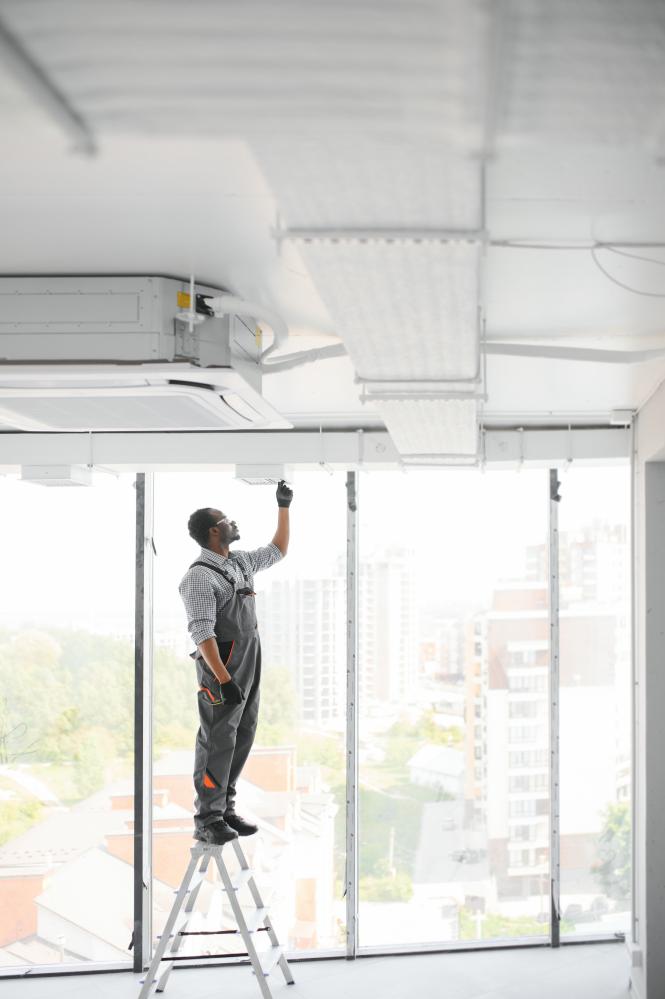
Installing & Maintaining Ceiling Fans
Importance of Ceiling Fan Selection
Choosing the right ceiling fan isn't just about aesthetics; it plays a major role in your comfort and energy efficiency. I've worked with many clients who initially underestimated how much a fan's blade size, pitch, and motor quality can affect its performance. It's crucial to select a fan that not only matches your room's decor but also suits its size. Larger rooms require fans with wider blade spans to circulate air effectively, and vice versa for smaller spaces. A fan with a robust motor and appropriate blade pitch will run more quietly and last longer. Pay attention to these details, and you'll enjoy a more comfortable living area while keeping energy consumption in check.
Tools and Materials Required
Proper tools and materials are indispensable for a successful ceiling fan installation and maintenance. From my experience with Beverly Hills Electrician Pros, having everything ready can save you from unexpected complications. You'll need a drill, screwdriver, pliers, and a ladder for installation. A voltage tester is also essential to ensure safety by verifying the power is off. For maintenance, a can of compressed air and a soft cloth help clean the fan's blades and motor housing, preventing dust accumulation that could affect the fan's performance.
Ceiling Fan Installation Process
Installing a ceiling fan may seem overwhelming, but with the right approach, it can be straightforward. Start by turning off the power at the circuit breaker to avoid any electrical hazards—safety is paramount. Removing an existing fixture can reveal wiring, which should be labeled for easy reconnection. Follow the manufacturer's instructions to attach the mounting brackets securely. Connect the wires as labeled, making sure they're tight with wire nuts. After attaching the fan blades, restore power to test your new fan. I always emphasize that planning and attention to detail can make this process much smoother.
Tips for Efficient Ceiling Fan Maintenance
Regular maintenance is key to prolonging your ceiling fan's life and ensuring it runs efficiently. Dust accumulation can disrupt the fan's balance, leading to noise and reduced performance. Schedule periodic inspections to check for loose screws or unusual noises. If you notice a wobble, usually tightening the blades solves the problem. Remember to lubricate the motor bearings as needed, using a lubricant recommended by the manufacturer. These small steps go a long way in ensuring your fan remains in top condition.
Energy Efficiency and Ceiling Fans
Using ceiling fans wisely can significantly enhance energy efficiency in your home. They serve as a complementary tool to air conditioning, especially when the weather is mild. Adjust the fan's speed and direction according to the season—counterclockwise in summer for a cooling effect and clockwise at low speed during winter to circulate warm air. By incorporating these strategies, you'll notice a reduction in energy bills. It's a simple yet effective way to improve comfort and save money concurrently.
Professional Ceiling Fan Installation
Many homeowners consider installing ceiling fans as a DIY task to save money. While this is doable, hiring a professional can make a world of difference in terms of safety and efficiency. Our team at Beverly Hills Electrician Pros ensures that the installation is not only secure but also blends aesthetically with your room. We assess the ceiling's capacity and the fan's weight, making sure everything is structurally sound. This kind of expertise only comes with experience, and it ensures that your fan is installed correctly and safely.
Understanding Common Issues
Diagnosing issues with ceiling fans is often the first step to effective repair. Many problems stem from power supply issues or dust accumulation. Ensure the fan is receiving electricity by checking circuit breakers and switches. A noisy or wobbling fan may just need some tightening or cleaning. Over time, you might notice a reduction in speed or grinding noises, which could indicate motor or bearing wear. Addressing these signs early can prevent more serious issues.
Handling Electrical Repairs
Some ceiling fan repairs go beyond basic DIY skills and require understanding of electrical systems. If your fan or blades won't start, inspect the wiring for damage—though I recommend leaving intricate electrical work to professionals. A fan's capacitor might also malfunction, affecting starting and speed regulation. Having a licensed electrician test and replace faulty components ensures safety and a proper fix. Swift action is essential to prevent complications.
DIY Solutions and Maintenance
Before calling professionals, some DIY solutions might resolve your ceiling fan issues. Regularly cleaning the blades enhances both balance and efficiency. Ensure all screws are tight to avoid wobbling and noise. If your fan is making unusual sounds, check for loose fixtures and ensure the mounting bracket is secure. These simple checks and maintenance tasks can prevent more serious issues from developing, saving you time and money in the long run.
Professional Repair Options
When DIY efforts don't resolve ceiling fan issues, professional help becomes invaluable. Our team at Beverly Hills Electrician Pros offers comprehensive solutions, from inspecting faulty wiring to assessing motor health. We also ensure compatibility with smart home systems. Professional services offer peace of mind, extending the life of your ceiling fan while safeguarding your home. Remember, entrusting skilled electricians with complex repairs ensures comprehensive care and long-term reliability.
Upgrading for Enhanced Performance
Sometimes, upgrading your ceiling fan during repairs can offer enhanced performance and energy efficiency. New models often boast better airflow, remote control features, and smart home integration. Evaluating your home's overall electrical needs when replacing old fans can lead to significant improvements in comfort and energy savings. An upgrade isn't just about better performance—it's a long-term investment in your home's efficiency.
What are examples of installing?
Installing a ceiling fan, as we often do at Beverly Hills Electrician Pros, involves steps like securely attaching the fan to the ceiling's mounting bracket, connecting the electrical wiring, and assembling the fan blades and light kit if applicable. A successful installation ensures the fan is tightly secured, balanced, and operational, improving both comfort and aesthetics in your living space.
What is a synonym for installing?
A synonym for installing is “mounting.” In the context of ceiling fans, mounting refers to fixing the fan securely onto the ceiling structure and ensuring it's positioned correctly for optimal performance and stability.
What is the cost of installing?
The cost of installing a ceiling fan can vary widely based on factors such as the complexity of the installation, ceiling height, and local labor rates. At Beverly Hills Electrician Pros, we provide clear, upfront pricing, ensuring no surprise fees. Generally, you might expect to pay anywhere from $100 to $300 for a standard installation, but it's best to get a personalized estimate for your specific needs.
What is the process of installing?
The process of installing a ceiling fan involves several steps, starting with turning off the power at the circuit breaker #### Resources for Ceiling Fan Installation and Maintenance
- U.S. Department of Energy – A comprehensive resource for understanding energy efficiency programs, including how ceiling fans can contribute to home energy savings.
- Consumer Product Safety Commission – Offers important safety guidelines and recalls related to ceiling fans to ensure consumer protection.
- Florida Solar Energy Center – Provides research and information on energy technologies and efficiency, relevant for selecting and using ceiling fans effectively.
- eXtension Foundation – Offers educational resources and guidance on home improvement, including tips on maintaining and using ceiling fans.
- National Environmental Health Partnership Council – A source for guidance on healthy home environments, including the impact of proper ventilation and ceiling fan usage.

